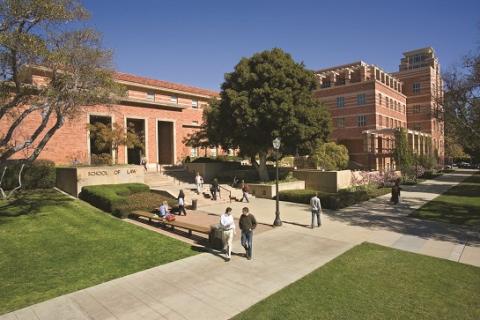UCLA Law Boosts Loan Repayment Assistance Program for Public Interest Grads

UCLA School of Law graduates who go into public interest law will receive greater financial assistance as the school enhances its Loan Repayment Assistance Program (LRAP), starting in January. Through LRAP, UCLA Law has in the past decade covered roughly $4.5 million in student loan payments for J.D. graduates who work in public interest jobs, government positions or judicial clerkships.
Under new LRAP guidelines, alumni with incomes up to $75,000 will have their eligible loan payments fully covered, an increase from the previous threshold of $60,000. Applicants with incomes up to $100,000 may now receive partial assistance, up from a previous threshold of $80,000.
UCLA Law administrators project that the program will double the number of graduates who have their student loan payments fully covered by the law school. At present, 94 UCLA Law alumni are covered by LRAP, and about 350 have benefited from the program since its inception.
“Student loans are one of the biggest barriers for law students who want to pursue public interest careers,” says Brad Sears, UCLA Law’s associate dean of public interest law. “The support that LRAP provides helps bridge that gap and allows the full diversity of our student body to pursue public interest careers, including students who carry a significant amount of student loan debt.”
On average, LRAP recipients who are between 1 and 10 years out of law school have annual incomes of $63,400, and student loan debt that often reaches six figures presents an often insurmountable obstacle on the path to a career in public interest work.
Kia Hayes ’13, a staff attorney at the Innocence Project New Orleans, says that she could not afford to pursue her career without UCLA Law’s LRAP.
“I came to UCLA Law because I wanted to dedicate my professional life to criminal and racial justice,” says Hayes, who has helped win the freedom of five men who were imprisoned after being wrongly convicted. “I would not be able to do this work were it not for LRAP. I relied on student loans to cover nearly all my tuition, and I would not be able to cover my monthly loan payments without LRAP.”
Currently, 41 percent of LRAP participants work in Los Angeles County, 52 percent work in California, 46 percent work elsewhere in the United States, and 2 percent work in international locations. They are employed at a wide array of impactful organizations, including Asian Americans Advancing Justice, the Bronx Defenders, the European Center for Constitutional and Human Rights, the Mexican American Legal Defense and Educational Fund, Sierra Watch and the U.S. Department of Homeland Security.